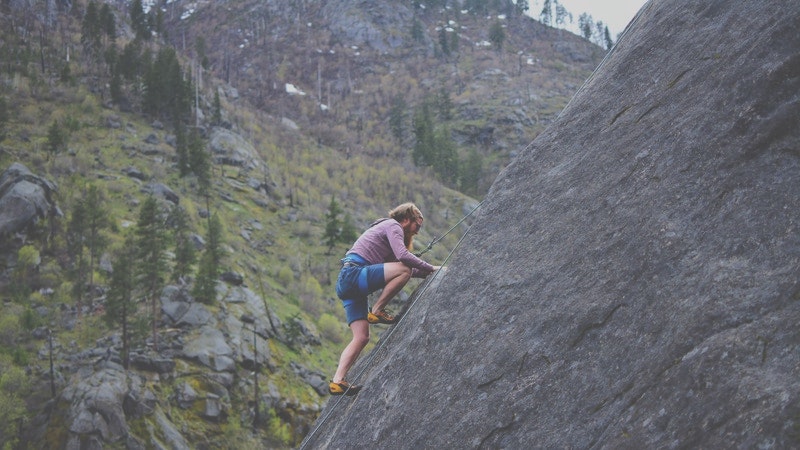Maximize Good Stress: Challenge Yourself to Build Resilience
Episode #2 of the course How to be good at stress by Dr. Kimberlee Bethany Bonura
Welcome back!
Yesterday, you learned that stress may be enhancing. Today, we’ll talk about how to maximize good stress.
It’s Good to Be Cold
Research with both rats and Canadian postal delivery persons has found that cold tolerance (in rats, due to forced cold water swimming; in Canadian post officers, due to delivering mail throughout the winter) leads to improved hormonal profiles. According to Ray Croni in his TEDMED lecture, “What’s the ‘coolest’ way to lose weight?”, researchers who have proposed the concept of “metabolic winter” believe that two major drivers of the modern obesity epidemic are that we are over-nourished and chronically warm, thanks to indoor heating; people who live in warmer areas are more likely to be obese than those in colder areas. In fact, making your bedroom colder, 66°F (19°C) rather than 75°F (24°C), is related to reduced levels of white fat (the kind that stores calories) and increased levels of brown fat (which is metabolically active and burns calories to generate heat).
So, being a little bit cold, at least seasonally, is good for your physical health. Being cold promotes a healthier hormonal profile, as well as improved body weight regulation. Regular cold exposure may also offer psychological benefits. Cold tolerance corresponds with emotional stability. This kind of cold exposure is a form of good stress.
Good Stress
Good stress is a challenge that forces us to grow and develop and improve our stress resilience. Resilience is your ability to adapt well in the face of adversity, trauma, tragedy, threats, etc. It doesn’t mean that you don’t “get stressed,” but rather that you know you have the resources to cope, manage, and recover.
Besides being a little bit cold, good stress may involve intellectual challenges, like learning a foreign language; emotional challenges, like learning to regulate our reactions through contemplative practices, such as meditation; and physical challenges, like increasing endurance or strength through exercise training. The Cross-Stressor Adaptation Hypothesis is the notion that when we purposefully stress the body through chosen activities, such as exercise, the body’s physiological stress response is activated. This purposeful activation of the physiological stress response trains the body to adapt to stress more effectively. So, running and practicing Italian make you better not only at running and practicing Italian but also at dealing with stress at work, at home, and in life in general.
Hence:
1. Good stressors force us to challenge ourselves but are also within our realm of capabilities. A good stress is difficult but possible.
2. Good stressors are intermittent. Cold in the winter is a good stressor because the body is challenged physiologically while out in the cold, and then we come inside where we can rest and recover.
Importance of Recovery
Being homeless in Canada in the winter is not a good stressor because there is no opportunity to rest. Good stress involves an opportunity to recover from the physiological impact of the stressor on the body.
When we exercise, we physically stress (strain, even tear, our muscles). In rest and recovery, our muscles repair and strengthen. Muscle building occurs in the rest periods between exercise sessions. When we learn a new skill, it is during recovery (and in particular, during sleep) that the neural processes in our brains consolidate and integrate what we have learned. Research with children shows that when children are sleep deprived after learning new information or skills, they fail to retain what they have learned. Recovery and rest are critical to the learning process. In the same manner, recovery and rest are critical to the training effects of good stress (we’ll talk more about recovery in Lessons 8 and 9).
Your task: Focus on the good stress you choose. Consider how you can actively cultivate your stress resilience through purposeful good stress. What can you do to challenge yourself? Make sure to select an activity that is both difficult and possible, and include time for rest and recovery. Perhaps you can add five minutes of power-walking to your normal stroll after dinner. Maybe you can supplement your normal novel-reading with a few pages of nonfiction or Shakespeare. You could add a 30-second cold rinse to your shower. Choose something that resonates with you, and take time today to build your stress resilience through deliberate training with good stress.
In our next lesson, we’ll talk about one of the best stressors: learning.
Recommended reading
Recommended video
“What’s the ‘coolest’ way to lose weight?”
Recommended book
Building Resistance to Stress and Aging: The Toughness Model by by Richard A. Dienstbier
Share with friends

